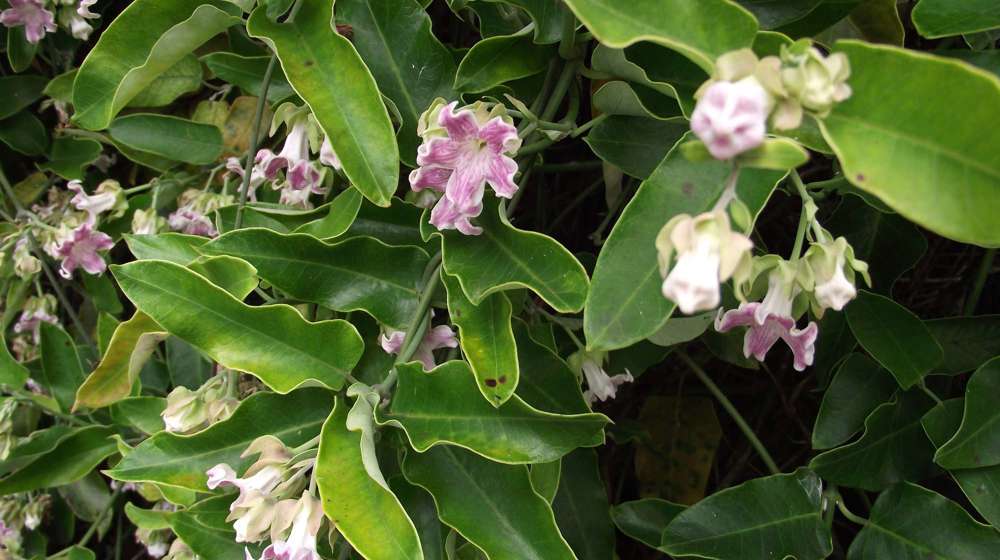-
-
-
-
-
-
-
-
-
-
Moth plant
-
-
-
-
-
-
-
-
-
-

Moth plant
| Common name: | Moth plant |
| Scientific name: | Araujia hortorum |
| Management programme: | Exclusion |

Report this pest!
If you think you have seen this pest, we need to know. Please report it.
Moth plant is bad for both biodiversity and human health. It climbs over and smothers shrubs and small trees and also spreads over the ground, smothering small native plants and seedlings. Both the fruits and stem produce a caustic milky sap when crushed or broken, which causes skin irritation in some people and is poisonous to humans.
Surprisingly, this plant looks nothing like the moth it’s named after. Moth plant is a broad-leaved, herbaceous (herb) climber and can grow to over 5m tall. It has almost oblong-shaped leaves and produces a lot of flowers, but small amount of fruit. The fruits are as big as a fist and contain about 400 seeds, and mature fruits normally stay on the vines for long periods.
While there are no rules for landowners in Otago regarding moth plant, if it gets into Otago, ORC would take the lead role in control. Over the life of the pest plan (10 years), the goal is to stop moth plant establishing in Otago to prevent negative effects on economic well-being and environmental values.
If you think you have seen moth plant, please let us know.
Report this pest!
If you think you have seen this pest, we need to know. Please report it.
www.orc.govt.nz/mothplant

















